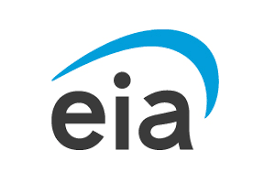· Brian Horton · Natural gas storage · 3 min read
U.S. Natural Gas Storage Rises Just 7 Bcf Amid Soaring Cooling Demand
A major heat wave across the U.S. drove up cooling demand and led to a below-expected 7 Bcf natural gas storage injection for the week ending August 1, 2025. Tight supply, rising LNG exports, and lower production continue to pressure inventories as summer heat lingers.

The smaller-than-expected natural gas storage injection for the week ending August 1, 2025, was largely the result of last week’s intense and widespread heat event, which significantly boosted power sector demand across much of the United States. According to the U.S. Energy Information Administration (EIA), working gas in storage increased by just 7 billion cubic feet (Bcf), bringing total inventories to 3,130 Bcf. This fell short of market expectations, which had been looking for a 12 Bcf injection, and signals tightening balances as summer enters its final phase.
The primary driver behind the weak build was the extreme heat that blanketed major consuming regions, particularly the South, Midwest, and parts of the East. With temperatures well above seasonal norms, electricity demand for air conditioning surged, leading to elevated natural gas consumption for power generation. Gas-fired power plants, which account for over 40% of U.S. electricity supply, ran harder to meet peak load demands, drawing more gas from the system and leaving less available for injection into storage. This dynamic was especially visible in the South Central region, where inventories declined by 17 Bcf, including a 20 Bcf draw from salt cavern storage—typically used for quick-response supply during high-demand periods.
While other regions did post modest injections—10 Bcf in the Midwest, 5 Bcf in the East, and smaller gains in the Mountain and Pacific regions—these additions were not enough to offset the weather-driven draw in the South. Overall, stocks remain 137 Bcf below last year’s levels but are still 173 Bcf above the five-year average, suggesting that while inventories are adequate, the system is highly sensitive to demand spikes and supply disruptions.
Adding further pressure to the market, dry gas production continued its downward trend, slipping to a four-week low of 106 billion cubic feet per day (bcfd), down nearly 3.7 bcfd from the record highs seen in late July. This production dip coincided with growing export demand. LNG feedgas volumes averaged 15.9 bcfd so far in August, up from 15.5 bcfd in July. The rebound follows the return to service of Freeport LNG in Texas and record flows at Venture Global’s Plaquemines terminal in Louisiana, which recently reached a new high of 3.2 bcfd.
Together, strong domestic power burn, declining production, and rising LNG exports formed a tight set of market fundamentals that limited the amount of gas available for storage. This convergence of factors sent U.S. natural gas futures back above the $3/MMBtu mark and reflects growing concern about forward supply balances, particularly if high temperatures persist through the rest of August.
With forecasts continuing to call for above-average heat in the coming weeks, market participants are closely watching how the supply-demand equation evolves. Although inventories remain within the five-year historical range, the latest data underscores how quickly the market can tighten under the right conditions. If production does not rebound and weather-driven demand stays elevated, future injections may continue to underperform, setting up a more volatile landscape heading into the early fall.
- EIA
- Energy Information Administration
- Natural Gas Stroage